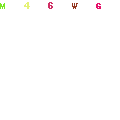A sharp increase in UFO activity in 1977-1978 (especially, the Petrozavodsk Case) had forced appropriate departments within the USSR Academy of Sciences to agree to a research program for anomalous atmospheric phenomena. The code name for this program was SETKA-AN (Akademii Nauk Set´–Academy of Sciences Net, or AS-NET.)
The Soviet Ministry of Defense embarked on a similar program, dubbed SETKA-MO (Ministerstva Oboroni Set´).
Reportedly, it was the Military-Industrial Commission that had ordered this research. The powerful Military-Industrial Commission decided to create two UFO research centers, one in the USSR Academy of Sciences, the other in the USSR Defense Ministry. Both centers aided each other´s research and exchanged information. But we are not completely certain; there have been reports from Russia that Yuri Andropov, the chairman of the KGB from 1967 to 1982, and the General Secretary of the Communist Party of the Soviet Union from 1982 to 1984, was extremely interested in the UFO
phenomenon (specifically, in one case investigated by SETKA researchers). He had enough power to give impetus to the creation of the secret program.
 And so, at the end of 1978, anomalous phenomena research in the USSR Academy of Sciences became the subject of a special scientific research program designated as SETKA-AN. Its functions were distributed among different departments, and a number of Soviet research institutes of the USSR Academy of Sciences received tasks to research various aspects of the anomalous phenomenon issue.
And so, at the end of 1978, anomalous phenomena research in the USSR Academy of Sciences became the subject of a special scientific research program designated as SETKA-AN. Its functions were distributed among different departments, and a number of Soviet research institutes of the USSR Academy of Sciences received tasks to research various aspects of the anomalous phenomenon issue.
On the 18th of October 1978, a meeting took place in the Academy of Sciences, USSR. Those present included Vladimir Vasilyevich Migulin, Georgiy Stepanovich Narimanov, Rem Gennadiyevich Varlamov, Victor Petrovich Balashov, Vladimir Ivanovich Volga, A. N. Makarov, Inna Evgraphovna Petrenko, Evgeniy Pavlovich Chigin, Dmitry Aleksandrovich Men´kov, Zaytsev (a colonel of the Soviet anti-aircraft forces), Lev Mironovich Gindilis, Inna Gennadyevna Petrovskaya, and Yury Victorovich Platov.
By the way, according to Dr. Fomenko, a famous Russian UFO researcher, a group of 10 or 15 researchers who later formed the SETKA core, regularly met outside their work to discuss the UFO phenomenon.
In 1981, the SETKA research program was given another name, Galaktika (MO and AN designations), and in 1986, the name was changed to Gorizont MO and AN. After the program ended (right after the failed Communist, anti-Gorbachev attempted coup in 1991, although Colonel Kolchin, a noted Russian UFO researcher, mentioned the year of 1990), a group of experts remained in the Department of General Physics and Astronomy of the Russian Academy of Sciences where they analyzed incoming reports until 1996.

